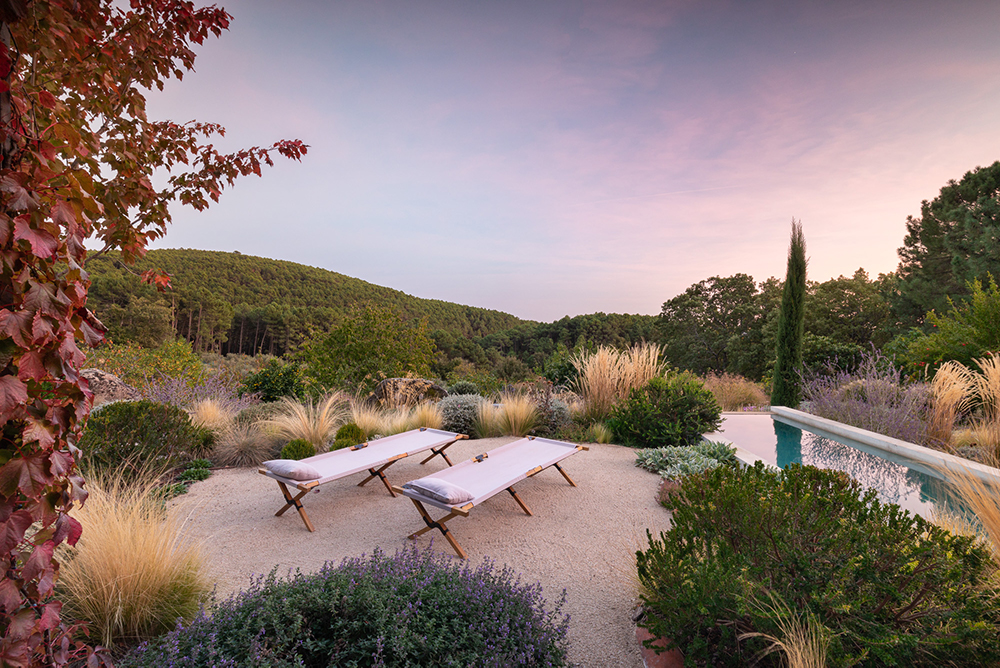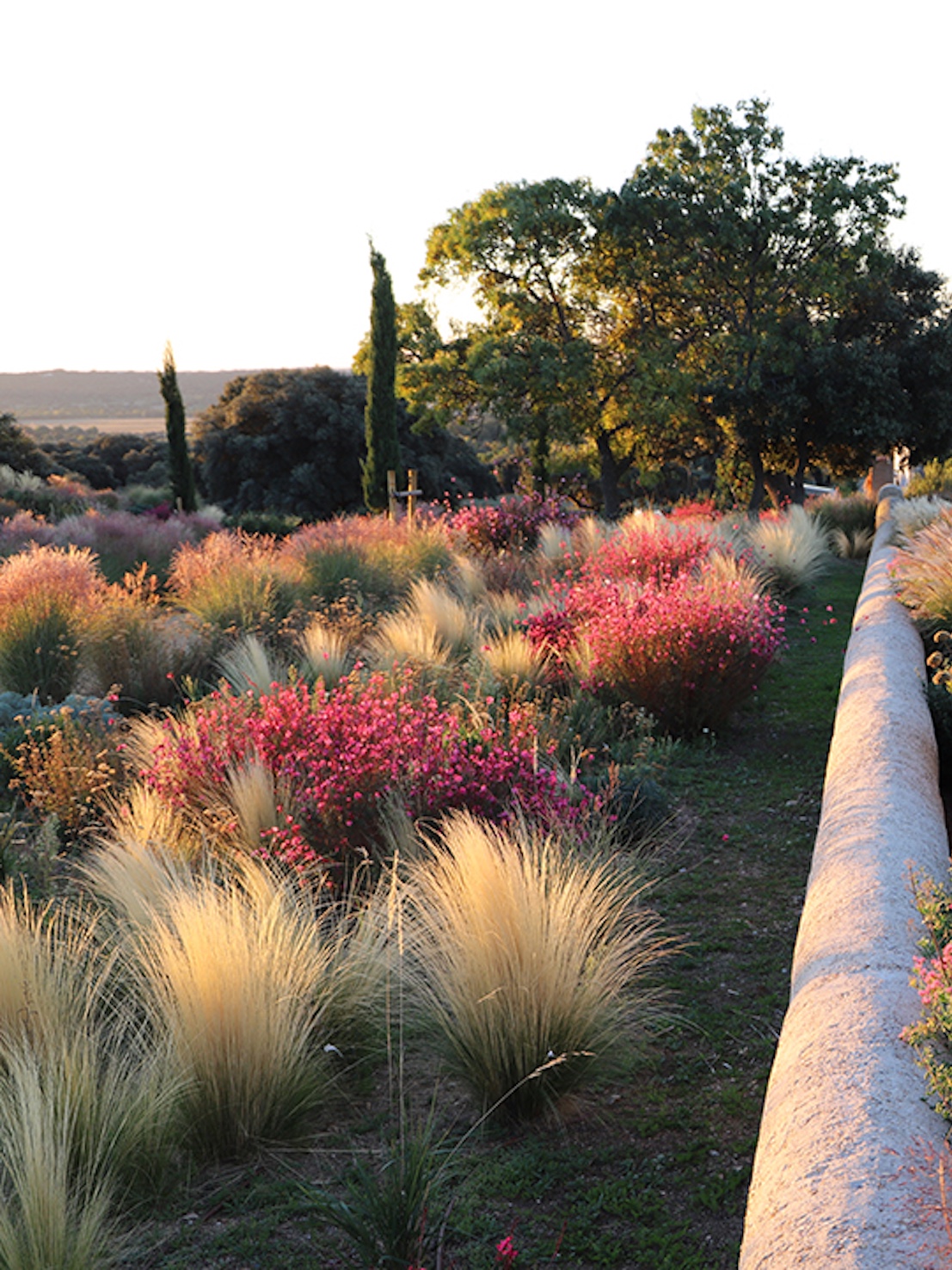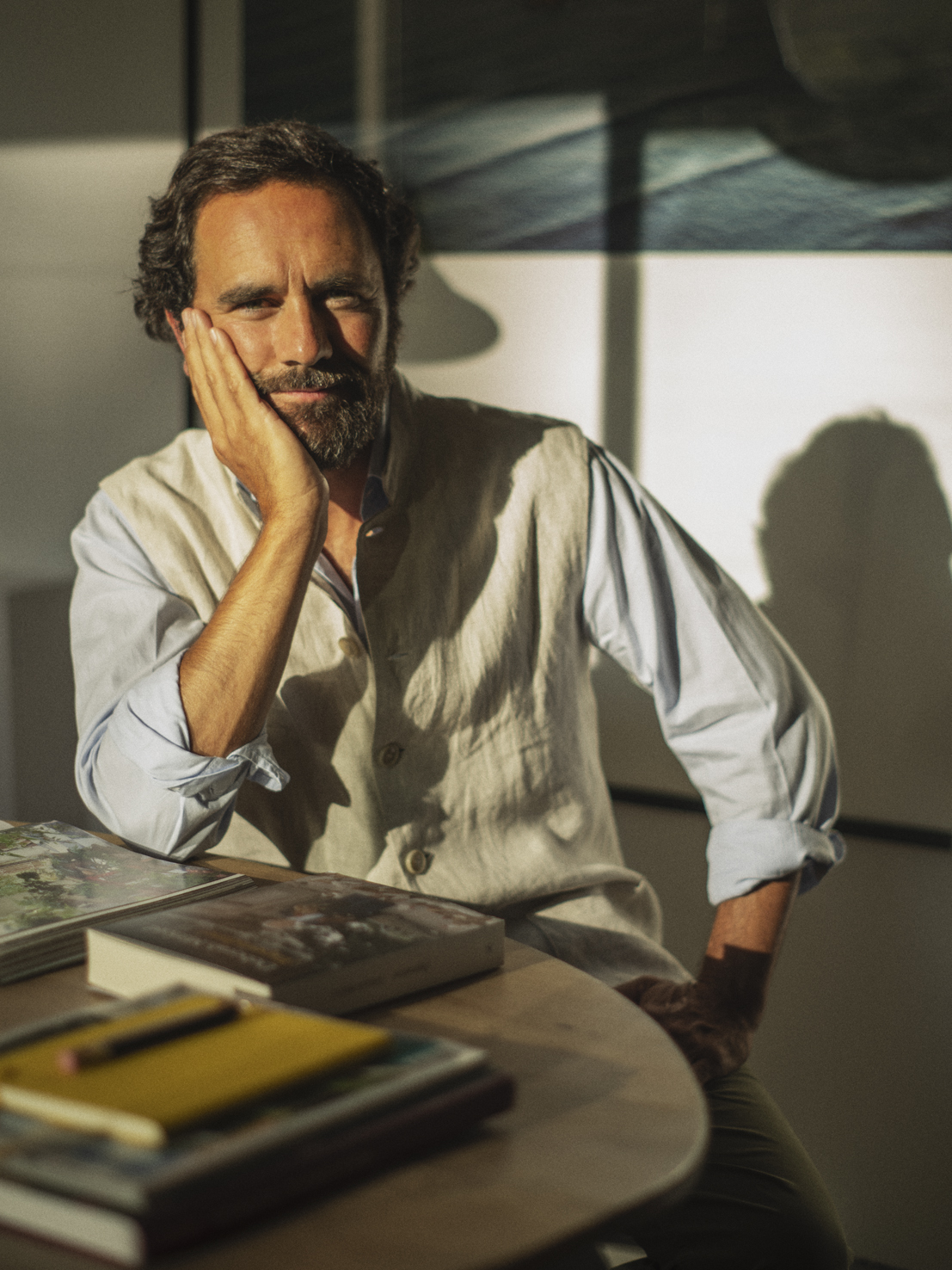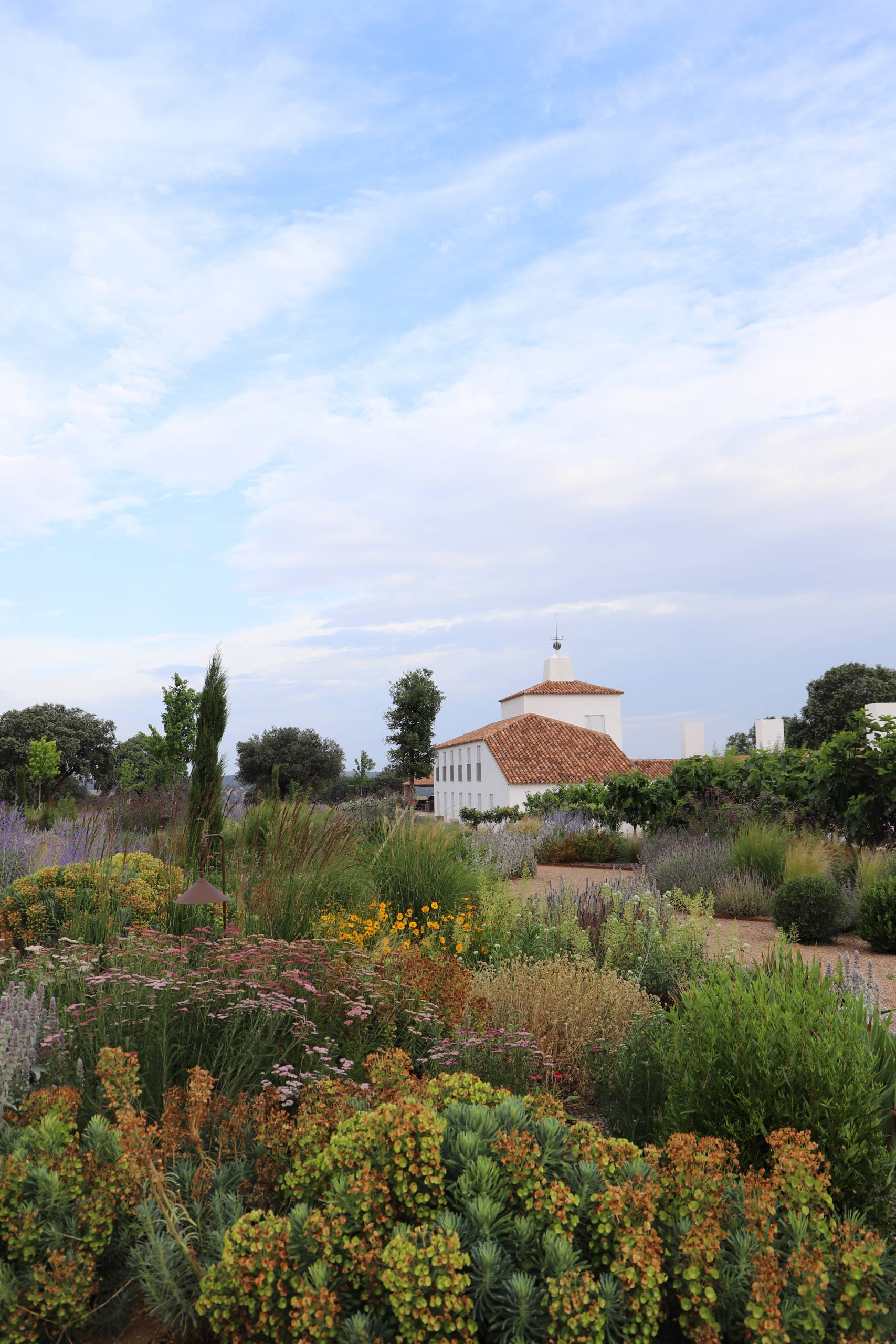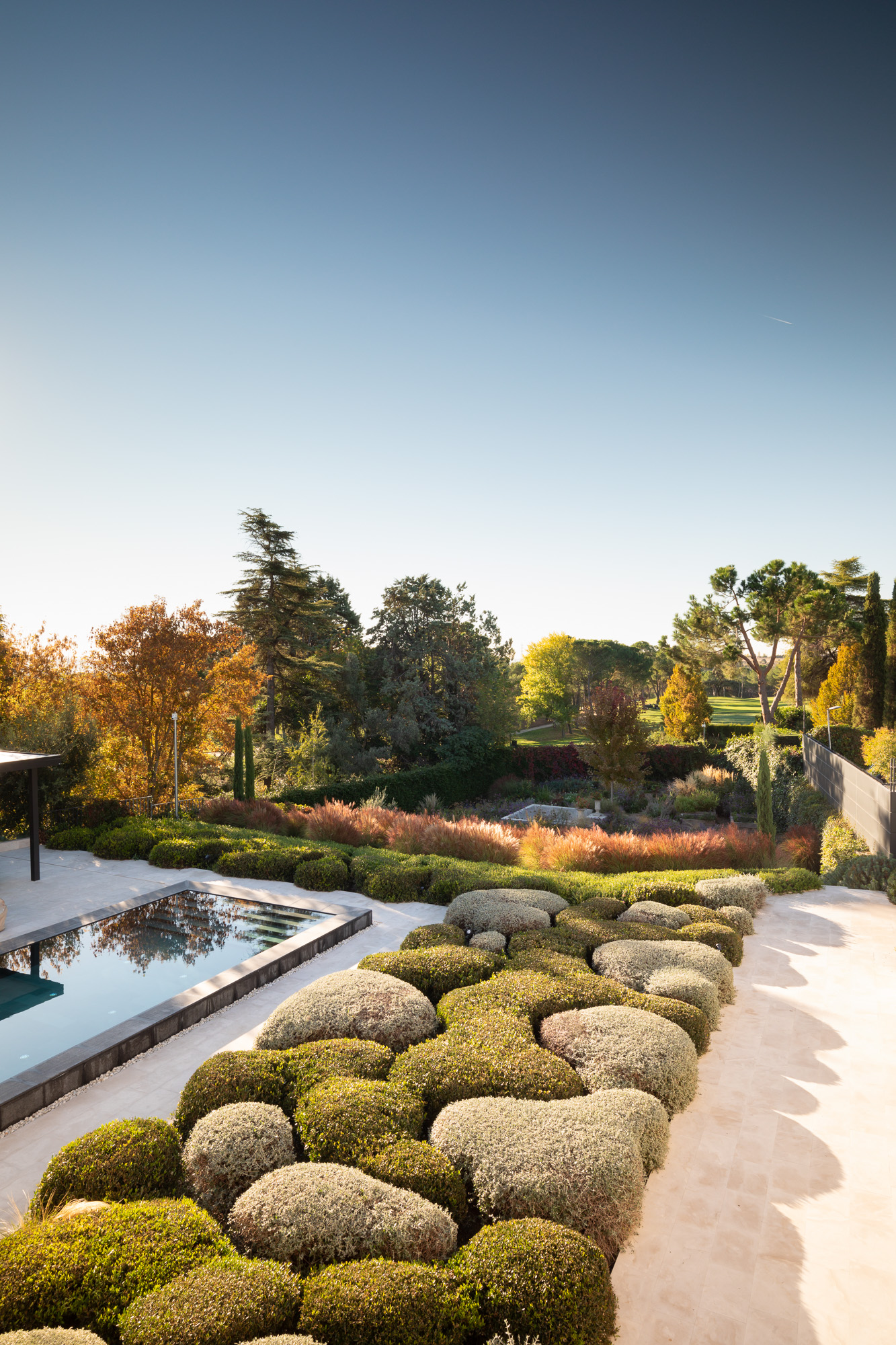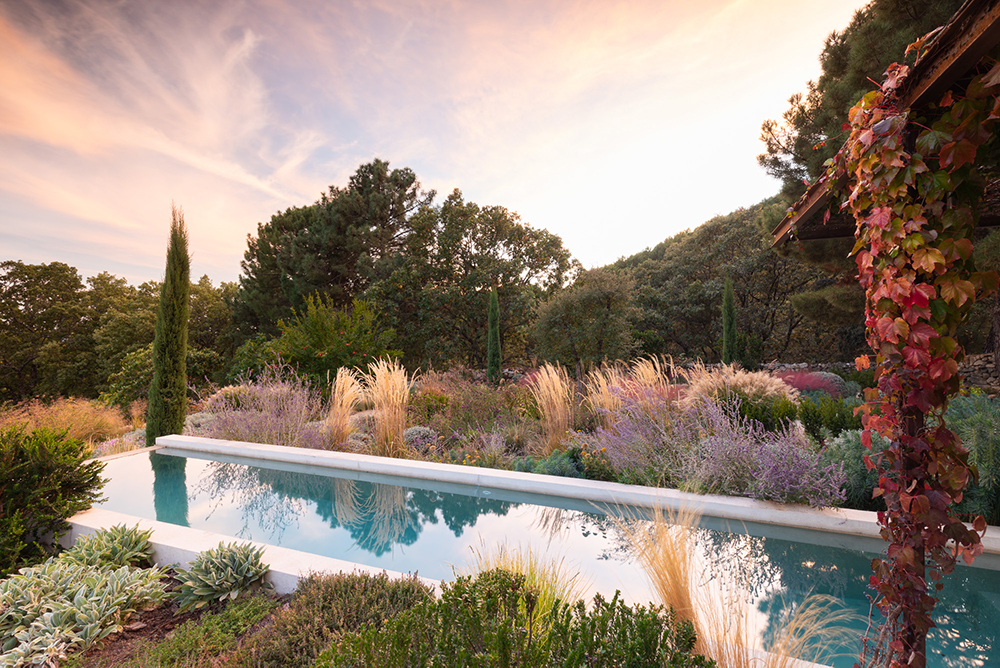JOIN the AFICIONADOS
Get the insider news and lowdown on what we've been up to, where we've been, and who we've met along the way. Be the first to discover new places and get the scoop on our favourites.
Álvaro Sampedro doesn’t design gardens in the traditional sense. He listens. He observes the slope of a valley, the texture of wind through grasses, the history written in soil. A Madrid-based landscape architect whose career began not with drawings but with a decisive shift from law to land, Álvaro Sampedro has become one of the most sensitive voices in Mediterranean ecological design. His landscapes are living, layered spaces — responsive, resilient and rich in stillness.
His gardens are formed through deep respect for place. Native planting is not just a stylistic choice but a quiet act of ecological stewardship. “We imagine what nature would have done and act accordingly,” he says. In practice, this means choosing species adapted to climate and soil, favouring resilience over decoration, and allowing time to do its work. These are not instant gardens; they are long-form conversations with the land.
In Spain’s Tiétar Valley, Álvaro’s own hillside garden reveals this philosophy in motion. Here, sinuous paths echo the terrain of the Sierra de Gredos, glacial boulders frame curved beds of Euphorbia, Perovskia and Achillea, and every turn offers a new, subtle perspective. Designed as a testing ground, this landscape has grown into a sanctuary — a space where more birds, bees and flowering plants now thrive. “There is more life now,” he reflects, “since we planted the garden.”
Other commissions have included biodynamic farms, wedding venues and wild coastal sites. At El Jaral de La Mira near Madrid, Álvaro sculpted a series of terraced gardens for chef Mario Sandoval, weaving together ancient oaks, edible planting, Herrerian geometry and loose Mediterranean textures. In La Moraleja, he designed from the movements of dogs and children, creating soft gardens that work with instinct. Whether reimagining a 17th-century palace or a sloping test plot, his ethos remains rooted in simplicity, ecological balance and patience.
That sensibility reaches a new crescendo at the hotel resort of AHÃMA, a nature-integrated sanctuary on Türkiye’s unspoilt coast. Here, Álvaro was tasked not only with designing a landscape but with protecting one — a rare grove of Liquidambar orientalis, the Oriental sweetgum tree, found only in this part of the world. Rather than dominate the space, he allowed this ancient forest to shape the design, ensuring that everything — paths, planting and transitions — worked in quiet deference to its canopy.
His palette, as ever, was local and minimal. Mediterranean natives were chosen for their ability to thrive with little water and zero excess. The garden blends the rawness of beach and woodland, holding the line between shelter and exposure. “Everything revolved around the forest,” he says. “It was about respect and enhancing what was already there.”
At AHÃMA, Álvaro Sampedro has done what he does best. He has made the architecture feel as though it rose from the roots. He has softened edges, invited slowness, and shaped a space that deepens with each return. His work here in the Bay of Fethiye is not a signature stamped onto the land, but an invitation to feel something essential — the quiet magic that exists between tree and tide, dawn and silence, place and memory.
